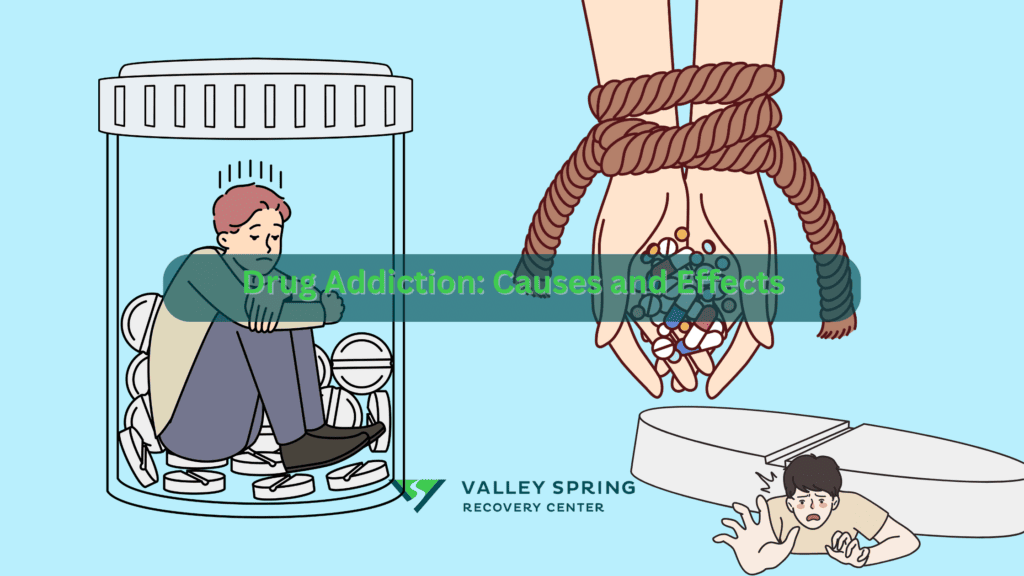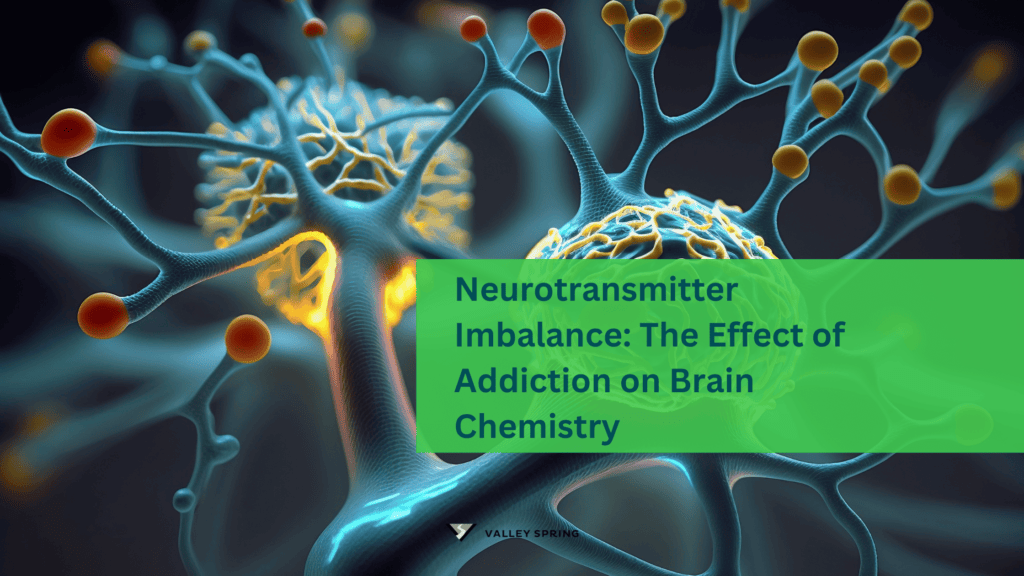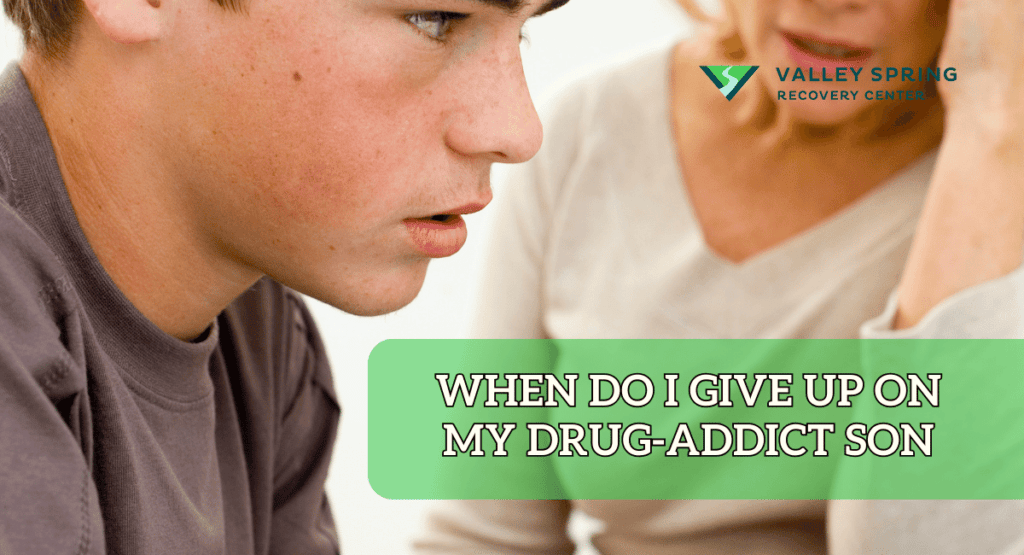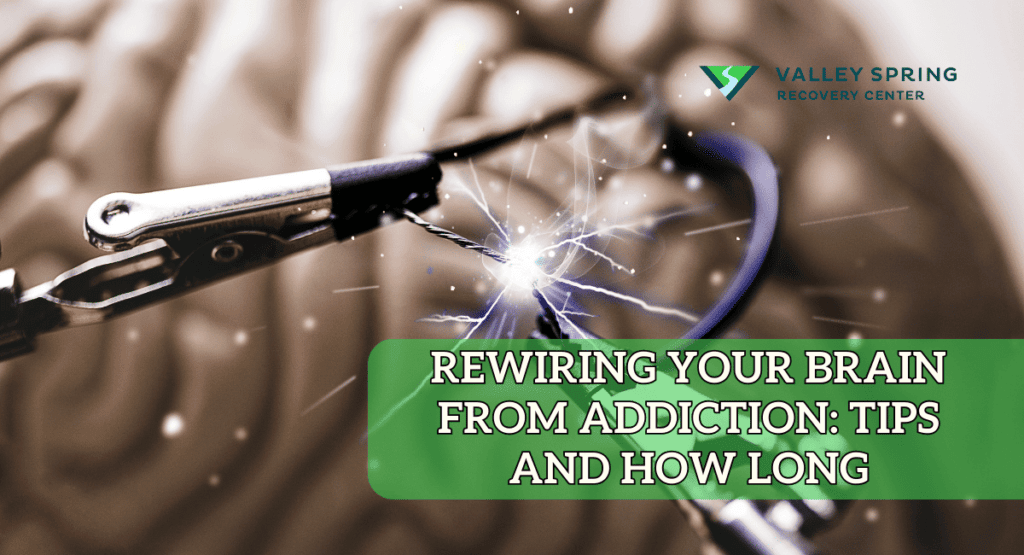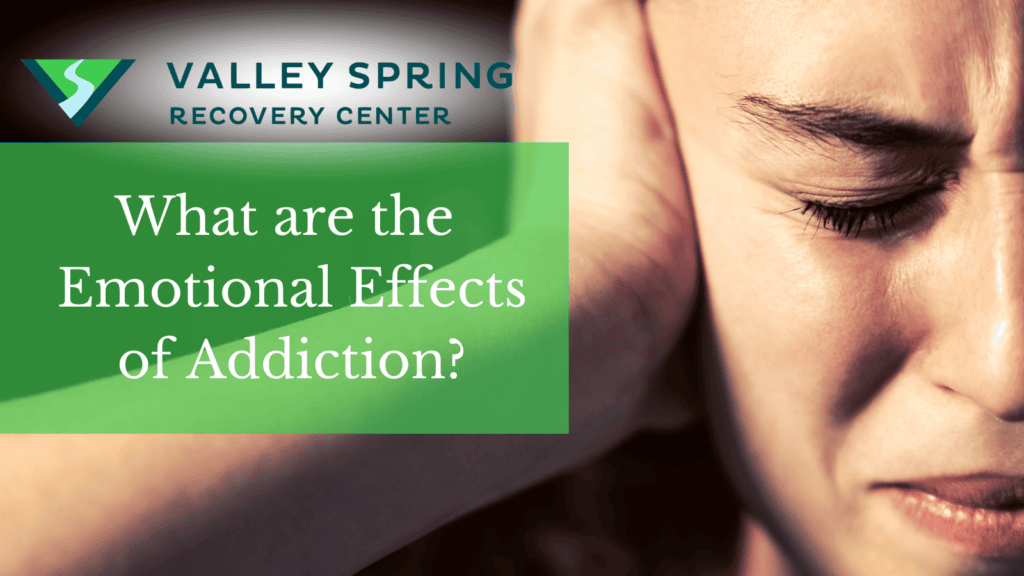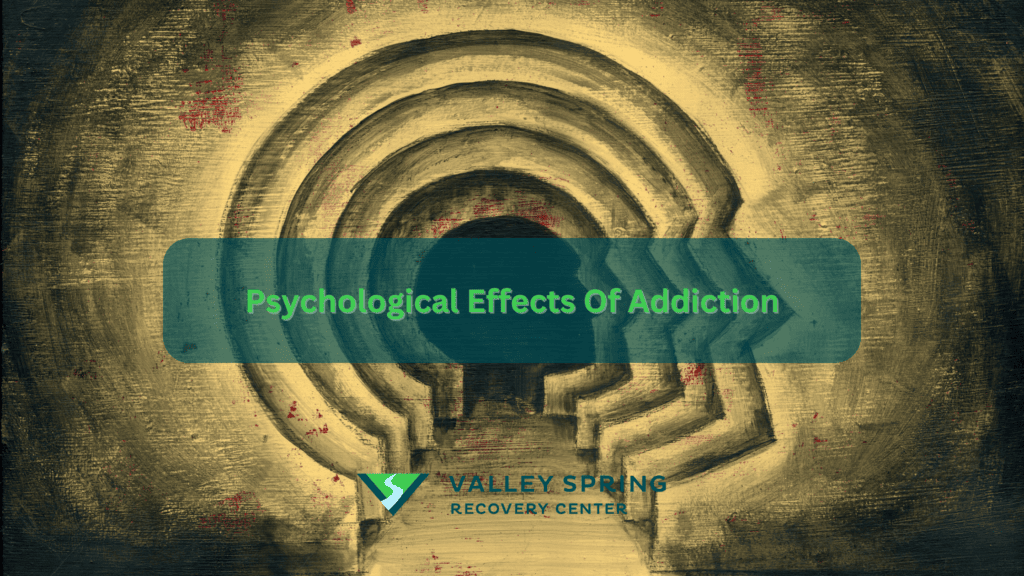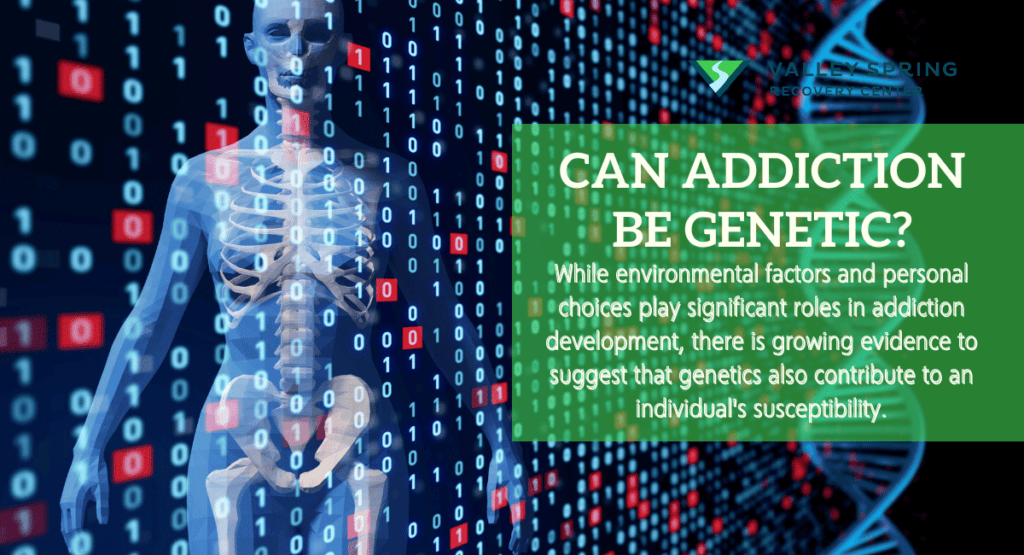Recent data from the Substance Abuse and Mental Health Services Administration (SAMHSA) reveal that as of 2023, approximately 19.7% of adults in the United States have encountered a substance use disorder, highlighting the critical and widespread issue of drug addiction. This complex condition, characterized by an overpowering urge to use drugs despite the harmful consequences, is not limited by social or economic backgrounds, impacting a diverse range of individuals.
Drug addiction manifests through a combination of physical and psychological symptoms. The most evident of these is the compulsive need to consume the drug, leading to harmful consequences. Growing tolerance, withdrawal symptoms, neglect of responsibilities, and social isolation are key indicators of this disorder. Understanding the multifaceted nature of addiction is crucial, as its causes are complex and interrelated. Genetic predisposition, environmental factors such as peer pressure and societal norms, and psychological triggers like stress, depression, and anxiety play significant roles in its development. Furthermore, the biochemical interaction between drugs and the brain’s reward system perpetuates a cycle that is challenging to break.
The effects of drug addiction are extensive, influencing every aspect of an individual’s life. Physically, it can lead to severe health issues like liver damage, respiratory problems, and cardiovascular diseases. Mental health is also profoundly affected, with increased risks of anxiety and depression. Socially, addiction often leads to strained relationships and isolation, while economically, it can result in job loss and financial difficulties. The legal repercussions and the potential for overdose and premature death further underscore the severity of this condition.
Addressing drug addiction requires a multifaceted treatment approach, including medical detox, inpatient and outpatient rehabilitation, and therapy. Providing individualized care within a supportive environment is paramount for effective recovery. This article aims to delve into the intricacies of drug addiction, offering insights into its symptoms, causes, effects, and the vital importance of comprehensive treatment.
What Is Drug Addiction?
Drug addiction, medically known as substance use disorder, is a chronic, relapsing condition characterized by compulsive drug seeking and use, despite harmful consequences. It’s a complex brain disorder involving alterations in the brain’s chemistry and function.
According to a study by the National Institute on Drug Abuse (2022), addiction affects the brain’s reward system by flooding it with dopamine, a neurotransmitter associated with pleasure and reinforcement. This alteration leads to an unnatural high, compelling the user to repeat the drug-taking behavior.
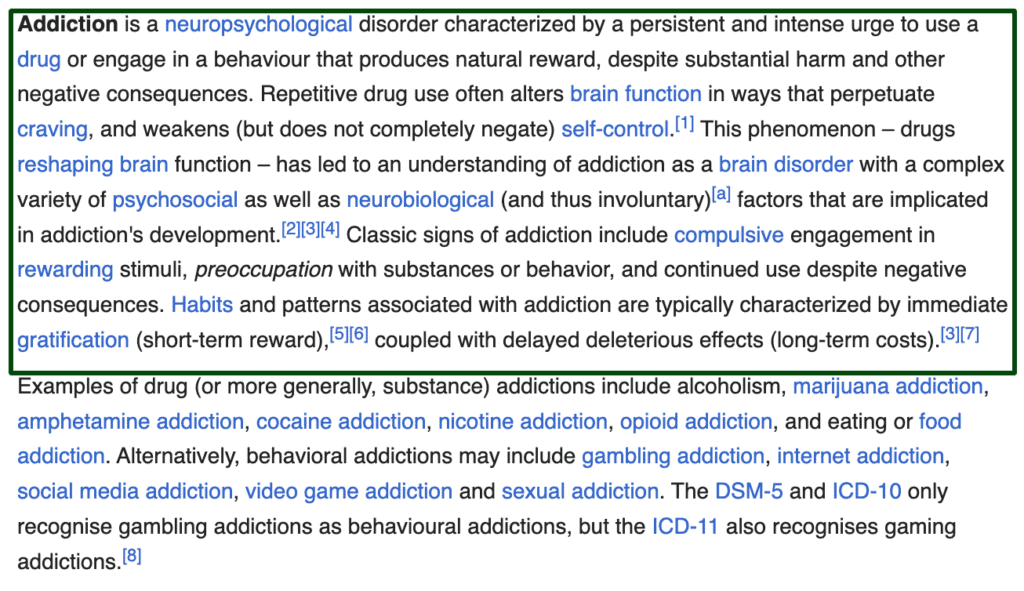
What Defines a Drug Addict?
A drug addict is often defined as an individual who is unable to cease drug use despite facing adverse consequences. This broad term is clinically nuanced as a person with Substance Use Disorder (SUD), chemical dependency, or simply as a substance user. The intricacies of addiction are significant, with classifications extending beyond the general term of drug addict. These classifications include specific substances of abuse, such as cocaine or heroin, and phases of addiction like active usage, ongoing recovery, or relapse.
Subtypes within Addiction Phases:
- Active Usage: Encompasses varying levels such as drug abuse, drug tolerance, and drug addiction.
- Recovery and Relapse: Each phase possesses distinct characteristics requiring different approaches.
Diagnostic Tools and Treatment Modalities:
- The identification of these subtypes is facilitated through diagnostic testing based on the DSM-5 and ASAM criteria.
- Factors such as physical health, mental stability, emotional balance, relational dynamics, and financial status influence the suitability of treatment methods.
- Customizing the therapeutic approach considering these diverse aspects is key to effective recovery.
The complexity of drug addiction requires a nuanced understanding and a tailored approach to treatment. Recognizing the various subtypes and stages within the addiction spectrum is vital for administering appropriate and effective therapeutic interventions.
What Are The Signs and Symptoms Of Addiction?
Identifying addiction involves recognizing various physical, emotional, psychological, and behavioral signs that impact an individual’s health, mood, and daily activities, emphasizing the importance of early intervention for effective treatment outcomes.
Physical symptoms stand out as clear indicators of addiction. A hallmark of drug addiction includes noticeable neglect in appearance, with individuals appearing disheveled and displaying a disregard for personal hygiene or grooming due to prioritizing substance use above self-care. Significant health issues also emerge, spanning digestive to respiratory problems. Furthermore, weight fluctuations become evident as addiction impacts appetite and metabolism directly.
Emotional and psychological symptoms, while less visible, are equally indicative of addiction. Mood swings, marked by sudden and severe emotional shifts from euphoria to deep irritability or sadness, disrupt the life of the addict and those around them. Anxiety and depression frequently occur, characterized by persistent worry, sadness, or a sense of hopelessness. These emotional states often perpetuate the addiction cycle, with substances used as a form of self-medication, worsening the underlying issues.
Behavioral changes are critical in diagnosing addiction. Alterations in daily routines, interests, and activities serve as significant warnings. For example, a previously punctual and responsible individual could begin to miss appointments or fail to fulfill obligations causing work or academic performance to suffer as a result of the addiction. Additionally, social isolation becomes a pronounced behavior, with the individual pulling away from family, friends, and social activities, either to conceal their addiction or because substance use dominates their life.
Why do some people become addicted to drugs while others don’t?
The reasons some individuals become addicted to drugs, as outlined in a 2018 NIDA study, encompass biological determinants, environmental catalysts, psychological and emotional triggers, and developmental and behavioral factors, highlighting the complex interplay of genetics, upbringing, mental health, and early substance exposure.
- Biological Determinants: Genetic factors significantly influence an individual’s predisposition to substance dependency. A combination of genetic variables directly impacts vulnerability to addiction. Moreover, neurodevelopmental factors, notably the ongoing development of the prefrontal cortex in adolescents, heighten the risk of substance dependency, especially with early substance exposure.
- Environmental Catalysts: The environment plays a crucial role in determining the likelihood of addiction. Peer groups that promote substance misuse often encourage similar behaviors in others. A family history of substance abuse intensifies this risk. Additionally, socioeconomic barriers, such as limited access to education and healthcare, increase susceptibility to addiction. These environmental influences are pivotal during critical developmental stages, shaping an individual’s addiction risk.
- Psychological and Emotional Triggers: Continuous stress and negative life events are significant psychological triggers for substance dependency. Disorders like Post-Traumatic Stress Disorder (PTSD), depression, and anxiety frequently accompany addiction, necessitating a dual-diagnosis approach for effective treatment. Peer pressure, along with physical and sexual abuse, early drug exposure, stress, and the role of parental guidance, profoundly influences an individual’s risk of substance use and addiction.
- Developmental and Behavioral Factors: Early initiation of substance use markedly increases the risk of developing a long-term dependency. Certain personality traits or disorders predispose individuals to addiction. A comprehensive understanding of these diverse risk factors offers a holistic perspective on susceptibility to addiction, highlighting the complex interaction between biological, environmental, and psychological factors.
Genetics predispose individuals to addiction, but environmental factors like stress, societal pressures, and accessibility often act as triggers. It’s generally a complex interplay between the two.
How do drugs interact with the brain to cause addiction?
Drugs usually target the brain’s reward system, flooding it with dopamine. This leads to repeated use, eventually causing changes in neural circuits that result in addiction. The brain’s reward center becomes used to receiving the dopamine spike that occurs when drugs are received into the system, making it harder and harder to stop, resulting in increased dependence.
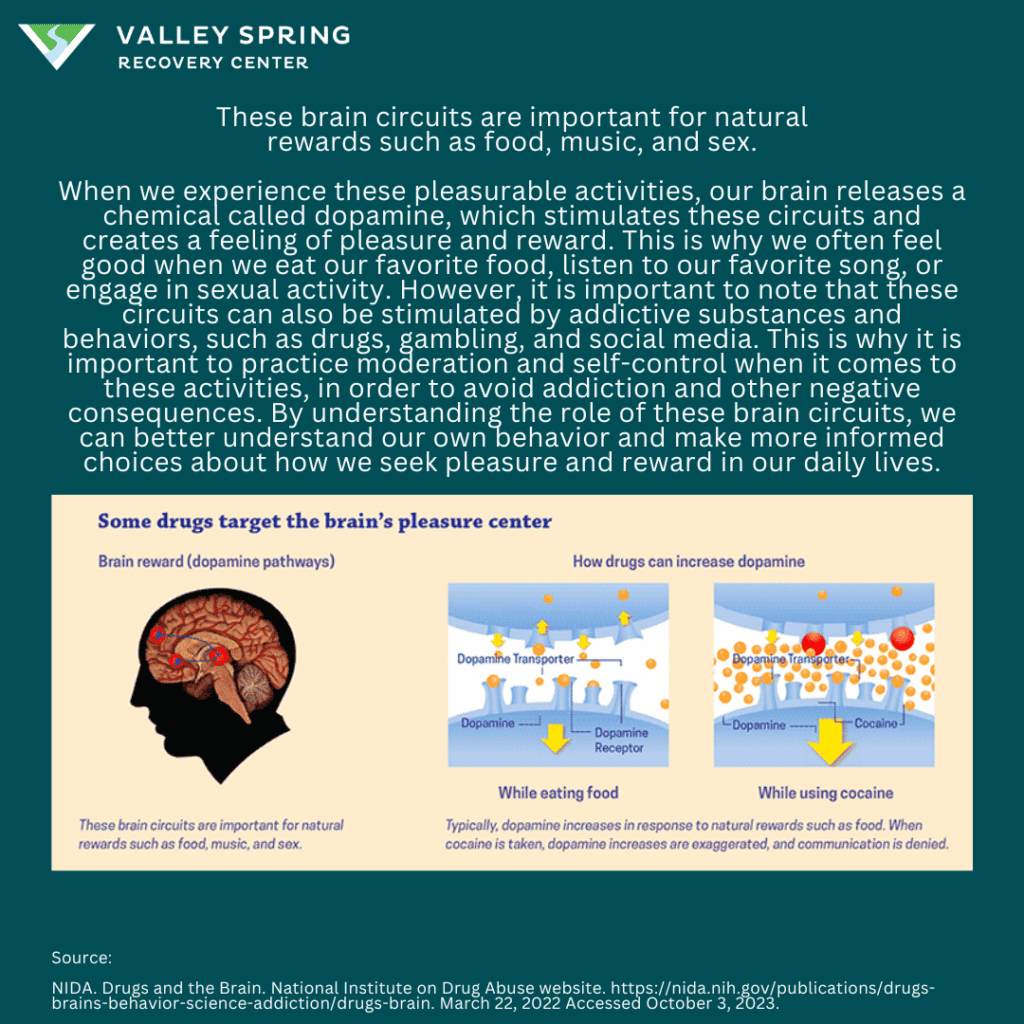
When does casual drug use transition into addiction?
Casual use becomes an addiction when it starts interfering with daily life, responsibilities, and relationships. The transition often involves increased tolerance and withdrawal symptoms. Timing varies from person to person.
When Does Drug Addiction Start?
Drug addiction begins at various life stages, influenced by factors such as genetics, social and psychological conditions, trauma, and exposure to drugs during critical periods like adolescence, with additional impacts from marital status, family dynamics, gateway substances, and occupation.
Individuals who are exposed to drugs at a young age have a higher probability of becoming addicted later in life. One of the most critical periods for the onset of drug addiction is adolescence. A study conducted by Aldo Alberto Conti and A. Baldacchino in July 2023 found that individuals who start tobacco smoking during adolescence are at a greater risk of developing severe tobacco addiction and potentially other forms of drug addiction later in life (Conti & Baldacchino, 2023). Similarly, a survey-based study in Bangladesh revealed that young people most commonly start using drugs between the ages of 15 to 18 (Sarker et al., 2023).
Marital status and family dynamics also play a role in the onset of drug addiction. A study focused on drug-addicted wives in Nigeria found two groups of drug abusers: those who started taking drugs prior to marriage and those who started after marriage (Abdullahi et al., 2023). The study also highlighted that drug addiction could lead to marital conflicts and vice versa.
Gateway Drugs: Cigarettes are often considered a gateway to drug addiction. A study by Ali Johardi Wirogioto in July 2022 suggested that 1 in 4 drug addicts started as addicted to cigarettes, and 90 percent of them began being addicted to other drugs when they were 18 (Wirogioto, 2022).
Psychological and Social Factors: Family problems were identified as the most prevalent cause of drug addiction in the Bangladesh study (Sarker et al., 2023). Peer pressure and the desire to experiment were also cited as common reasons for the onset of drug addiction.
Occupation: A 2020 study from the National Vital Statistics Reports showed that Drug overdose mortality varied by usual occupation and industry. Workers in the construction and extraction occupation group (162.6 deaths per 100,000 workers, 95% confidence interval: 155.8–169.4) and construction industry group.
What Are The Effects of Addiction?
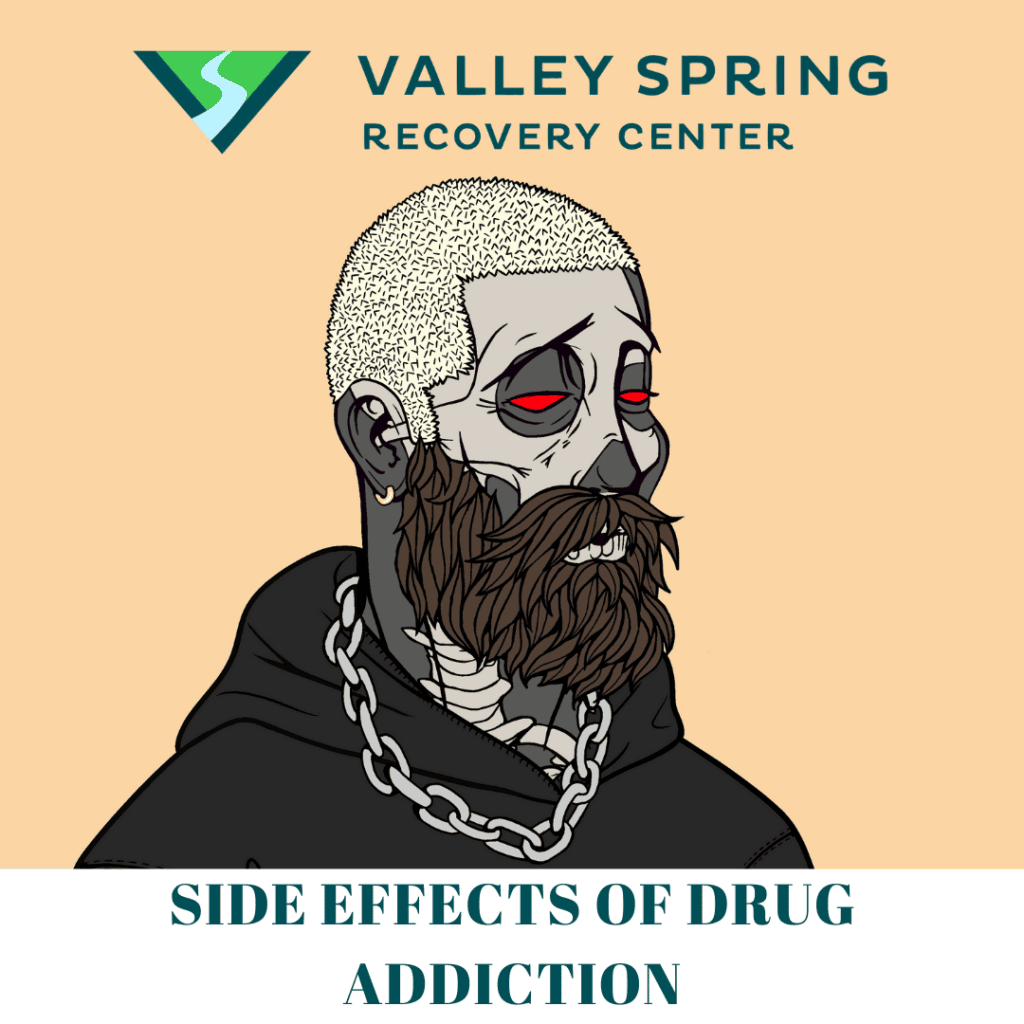
The effects and consequences of drug addiction are far-reaching and profoundly impact nearly every part of an individual’s life, affecting their physical health, emotional well-being, relationships, and even their standing in society.
Physical Health: One of the most immediate effects of drug addiction is physical health. Depending on the substance abused, individuals experience a range of health issues including liver damage, respiratory problems, cardiovascular diseases, stroke, cancer, and infectious diseases like HIV/AIDS from shared injection equipment.
Mental Health: Drug addiction often co-occurs with a range of mental health issues, such as depression, anxiety, and schizophrenia. Substance abuse exacerbates mental health conditions, creating a vicious cycle that’s difficult to break.
Relationships: Addiction strains relationships with loved ones due to erratic or violent behavior, neglect of responsibilities, and other negative consequences of drug use. This often leads to isolation from family and friends, creating a further emotional toll.
Economic Impact: The financial burden of sustaining a drug habit leads to job loss and homelessness. The cost of purchasing the drug, coupled with reduced productivity and increased healthcare expenses, causes financial strain.
Legal Consequences: Drug addiction leads to a host of legal problems, including arrest, incarceration, and a lifelong criminal record, which in turn affects employment prospects and social standing.
Social Stigma: The societal perception of drug addicts is often negative, which leads to stigmatization and further isolation. This social stigmas make it more difficult for individuals to seek help and often exacerbates the emotional toll of addiction.
Overall Quality of Life: Ultimately, drug addiction significantly lowers the users quality of life, leading to a loss of interest in activities that once brought joy, and many times leads to overdose and premature death.
What are the long-term health consequences of drug addiction?
Long-term health effects range from liver damage and respiratory issues to mental health deterioration and even death. Severity varies based on the type of drug and length of addiction.
What Are The Different Types of Drug Addiction?
Drug addiction manifests in a myriad of forms, each with distinct characteristics and impacts on both physical and mental health. The types of addictive drugs range from opioid and stimulant addictions, which often stem from either recreational use or initial medical prescriptions to depressants like alcohol and benzodiazepines that slow down brain activity. Hallucinogens and cannabis, though generally considered less addictive, still pose risks for abuse and psychological dependency. Prescription drug addiction is another growing concern, encompassing various medications like painkillers and anti-anxiety drugs. Additionally, polysubstance addiction involves the concurrent abuse of multiple substances, complicating treatment approaches. Behavioral addictions, such as gambling and internet use, also activate the brain’s reward system, similar to substance addictions.
- Opioid Addiction: Often starts with medical prescriptions but escalates to dependency.
- Stimulant Addiction: Includes substances like cocaine and amphetamines, leading to physical and psychological dependence.
- Depressant Addiction: Encompasses alcohol and benzodiazepines, which slow down brain activity.
- Hallucinogen Addiction: Generally less addictive but still poses risks for psychological dependency.
- Cannabis Addiction: Considered less harmful lead to dependency when used in high doses.
- Prescription Drug Addiction: Includes medications like opioid painkillers and benzodiazepines.
- Polysubstance Addiction: Involves the concurrent abuse of multiple substances.
- Behavioral Addiction: Includes non-substance addictions like gambling and internet use.
What are the most addictive drugs?
Addiction is a multifaceted issue influenced by physiological, psychological, and social elements. The most addictive drugs are often identified based on their impact on the brain, the severity of withdrawal symptoms, and their potential for abuse. Key parameters include the speed at which dependency develops, the consequences of withdrawal, and the drug’s effect on the brain’s reward system.
- Opioids: Notoriously addictive due to intense euphoria and pain inhibition. High risk of overdose.
- Cocaine and Crack Cocaine: Quick but short-lived highs that contribute to frequent use and addiction.
- Methamphetamine: Intense dopamine release leads to devastating physical and mental health effects.
- Nicotine: Highly addictive due to mood elevation and neurotransmitter mimicry.
- Benzodiazepines: High dependency risk even with medical use, severe withdrawal symptoms.
- Alcohol: Socially accepted but has a high potential for abuse and a broad range of neurological impacts.
What are the most deadly drug addictions?
The deadliest drugs are often gauged based on the risk of overdose, long-term health impacts, and the likelihood of fatal interactions with other substances. Some of these substances are prescription medications, while others are illegal street drugs. A key measure of lethality is the ratio between the effective dose and the lethal dose.
- Fentanyl: An opioid 50-100 times more potent than morphine, responsible for a surge in overdose deaths. According to statistics, fentanyl overdoses have increased 12-fold in recent years.
- Heroin: A highly addictive opioid with a high overdose risk, often due to impurities or varying potency.
- Methamphetamine: Causes severe damage to the heart, liver, and brain, leading to an increased risk of death over time.
- Cocaine and Crack Cocaine: High potential for overdose, especially when mixed with other substances like alcohol.
- Alcohol: Though socially accepted, it’s one of the leading causes of preventable death worldwide.
- Barbiturates: Prescription medications with a very narrow safety margin, making overdose easy.
- Tranquilizers: Tranquilizers like Xylazine have a high risk of overdose when mixed with other drugs.
What Are The Addiction Statistics?
Addiction is a pervasive and multifaceted issue that goes beyond personal lives, extending its reach into entire communities and industries. As explored in our previous article on the effects of drugs and alcohol in the workplace, nearly 8.7 percent of full-time workers aged 18 to 64 reported having a substance use disorder (SUD) in the past year. This prevalence varies across industries, with construction witnessing as high as 16.5%, compared to 4.3% in education services. Age and gender also play significant roles in SUD rates, with younger workers and males generally experiencing higher rates. The economic impact of substance abuse in the workplace is tangible, leading to decreased productivity, increased absenteeism, and elevated healthcare costs. According to the White House drug addiction statistics, addiction is responsible for $120 billion in lost productivity and $11 billion in healthcare costs alone. Health and Human Services states he annual economic impact of substance misuse is estimated to be $249 billion for alcohol misuse and $193 billion for illicit drug use.
What Does Drug Addiction Do To The Brain?
Drug addiction exerts a multifaceted impact on the brain’s neural architecture, fundamentally altering its reward, cognitive, and emotional circuits. Initially, substances with addictive potential hijack the brain’s reward system, flooding it with dopamine—a neurotransmitter linked to pleasure and reinforcement. It’s important to understand the science of drug addiction as it relates to the brain because the dopamine surge from ingesting drugs not only induces an intense feeling of euphoria but also reinforces the drug-taking behavior, setting the stage for a vicious cycle of addiction. Over time, the brain adapts to these dopamine spikes by reducing the responsiveness of the neural cells in the reward circuit, a phenomenon known as ‘tolerance.’ This adaptation diminishes the individual’s ability to derive pleasure from other life-affirming activities, such as social interaction, eating, or sexual activity, thereby narrowing their sources of pleasure to the drug itself. Moreover, long-term drug use extends its damaging effects to other neural circuits, impairing cognitive functions like learning, judgment, and decision-making, while also affecting emotional regulation and stress response. Despite being cognizant of these adverse outcomes, the individual often finds themselves ensnared in a self-perpetuating cycle of substance abuse, epitomizing the paradoxical and self-destructive nature of addiction.
What Are Addiction Treatment Options In The Context Of Drug Rehab?
There are multiple types of addiction, along with various treatment types and implementations. Treatment occurs in drug rehab centers that use different treatment modalities to help addicts recover from substance use disorder. Therefore, we will discuss the different types of rehab centers where treatment is implemented: of rehab centers addiction treatment options are varied and often tailored to meet the unique needs and circumstances of each individual. Here are some of the most common types of addiction treatment options to expect:
- Medical Detox: This is usually the first step in many treatment programs. Under medical supervision, substances are safely removed from the body, ensuring that the patient is physically stable before proceeding to other forms of treatment.
- Inpatient Drug Rehab: This involves residential treatment where patients stay at a facility and receive intensive care. Inpatient treatment often includes medical observation, detoxification, therapy, and other forms of support in a controlled environment.
- Partial Hospitalization Program (PHP): Also known as “day treatment,” PHP is a more intensive form of outpatient care that allows individuals to access high-level medical and therapeutic care while living at home or in a sober living environment.
- Intensive Outpatient Program (IOP): Patients who are stable enough to live at home but still require significant treatment are the best fit for IOP according to ASAM and the DSM-5. This program involves attending treatment sessions for several hours a day but allows patients to carry on with their daily activities.
- Outpatient Treatment: This flexible option is suitable for individuals who have a strong support system at home and only need therapy or counseling services. Outpatient treatment can be customized to fit around work, school, and family commitments.
- Long-term Residential Treatment: For severe addictions, long-term residential options offer extended care that can last several months or even years.
- Therapy and Counseling: This includes a range of approaches such as individual therapy, group therapy, and family therapy. Cognitive Behavioral Therapy (CBT), Dialectical Behavior Therapy (DBT), and Motivational Interviewing are often used in these sessions.
- Alternative Therapies: These can include holistic approaches like acupuncture, art therapy, equine therapy, and mindfulness meditation as complementary treatments.
- Aftercare and Alumni Programs: Crucial for long-term recovery, these programs offer ongoing support, resources, and community to help prevent relapse.
MEDICAL DETOX
The process of medical detox involves safely removing substances from the body under the watchful eye of medical professionals. This is a critical first step in addiction treatment to ensure physical stabilization, preparing the individual for further therapeutic interventions. The importance of medical detox cannot be overstated, as withdrawal symptoms can be severe and even life-threatening. It often includes pharmacotherapy and psychological help to manage withdrawal symptoms and cravings, providing a medically stable foundation for subsequent levels of care.
INPATIENT DRUG REHAB
Inpatient drug rehab provides intensive 24/7 care within a supportive environment. The benefits of this approach include structured support, a sense of community, and comprehensive care to address all aspects of addiction. Inpatient rehab integrates various therapies, and medical protocols including individual counseling, group therapy, medication management, and holistic treatments. This setting allows for constant monitoring and immediate intervention, fostering physical, mental, and emotional recovery.
OUTPATIENT TREATMENT
Outpatient treatment offers flexibility, allowing for treatment that accommodates work, school, and family commitments. It includes therapy, counseling, support groups, and often involves PHP as well. Though less intensive than inpatient care, outpatient treatment still provides essential services, including medical management, cognitive-behavioral therapy, and relapse prevention. Outpatient care facilitates a transition back to daily life while maintaining a connection to recovery support.
THERAPY AND COUNSELING
Therapy and counseling in addiction treatment are multifaceted, involving both individual sessions tailored to each patient’s unique needs and group and family sessions that foster support and understanding among peers and family members. These therapies are often integrated into all levels of care and include various psychological and behavioral techniques, such as Cognitive Behavioral Therapy (CBT), Dialectical Behavior Therapy (DBT), and family systems therapy. Counseling often plays a role in these therapeutic interventions, ensuring that medical and psychological needs are met throughout the recovery process. Therapy and counseling are vital components in building resilience, developing coping skills, and fostering lasting recovery.
Where Is Addiction Treated?
Addiction treatment is a multi-faceted endeavor that can take place in various settings, each offering a unique approach to recovery. The choice of treatment setting often depends on the severity of the addiction, the substance involved, and the individual’s specific needs. Different types of treatment providers are collectively referred to as drug rehab centers. Here is a comprehensive overview of the primary locations where addiction is treated:
Inpatient Drug Rehabilitation Centers: The most conventional setting for addiction treatment is a drug rehabilitation center. These facilities offer a structured environment that provides both medical and psychological support. They often include detoxification services, individual and group therapy, medication-assisted treatment, and aftercare planning. Rehab centers that are residential or inpatient mean the individuals reside at the facility, whereas in outpatient programs allow patients to continue living offsite.
Hospital-Based Programs: Some hospitals offer specialized addiction treatment programs, particularly for cases requiring medical detoxification or co-occurring mental health conditions. These programs provide a higher level of medical supervision compared to standard rehab centers.
Mental Health Clinics: For individuals dealing with both addiction and mental health issues, specialized mental health clinics can offer dual diagnosis treatment. These facilities provide integrated care that addresses both conditions simultaneously, improving the chances of long-term recovery.
Community Health Centers: These centers offer outpatient addiction treatment services, often at a lower cost. Community health centers provide medication-assisted treatment, counseling, and referral services for more intensive treatment if needed.
Telehealth Services: With the advent of technology, online platforms now offer telehealth services for addiction treatment. These services are particularly useful for those who cannot access traditional treatment centers due to geographical or financial constraints.
Support Groups and 12-Step Programs: Organizations like Alcoholics Anonymous (AA) and Narcotics Anonymous (NA) offer peer-led support groups. While not a substitute for professional treatment, many find these groups beneficial as a supplementary form of support.
Holistic and Alternative Therapy Centers: Some individuals opt for holistic treatments like acupuncture, yoga, and herbal medicine as adjunct therapies. While the efficacy of these methods is still under study, some find them beneficial in managing withdrawal symptoms and cravings.
frequently asked questions (FAQs) about Addiction
What is the Relationship Between Addiction and Mental Health?
The relationship between addiction and mental health is intricate and multifaceted, often leading to a complex interplay between the two. Here’s an in-depth look at this relationship:
-
Co-Occurrence: Mental health disorders and addiction often co-occur. This means that individuals struggling with addiction might also have one or more mental health conditions, such as depression, anxiety, or bipolar disorder, and vice versa.
-
Shared Risk Factors: Both mental health and addiction have shared genetic, environmental, and biological risk factors. For example, genetic predisposition, trauma, and chronic stress can increase the likelihood of both mental illness and addiction.
-
Cause and Effect: In some cases, mental health disorders might contribute to addiction. A person suffering from anxiety or depression has a higher liklihood of turning to drugs or alcohol as a form of self-medication. Conversely, chronic substance abuse can lead to mental health issues, as the effects of drugs and alcohol can alter brain chemistry and exacerbate underlying mental health symptoms.
-
Impact on Treatment: The interconnection between mental health and addiction necessitates an integrated approach to treatment. Treating one condition without addressing the other can hinder recovery. Dual-diagnosis treatment centers provide comprehensive care that addresses both mental health and substance abuse disorders simultaneously.
-
Recovery Challenges: The overlapping nature of mental health and addiction can make recovery more challenging. Symptoms of mental health disorders might trigger cravings and relapse, while withdrawal from substances might worsen mental health symptoms. Ongoing support and specialized care tailored to the individual’s specific needs are crucial.
-
Prevention and Early Intervention: Understanding the link between mental health and addiction emphasizes the importance of early intervention and prevention. Addressing mental health symptoms early, providing support, education, and therapy, can reduce the risk of developing an addiction.
-
Social and Societal Factors: Stigma surrounding both mental health and addiction can create barriers to seeking help. Encouraging open dialogue, reducing stigma, and providing accessible services are essential for supporting those affected by these interconnected issues.
The relationship between addiction and mental health is complex, characterized by a two-way influence where one condition can exacerbate the other. Recognizing and addressing this relationship is vital for effective treatment, prevention, and ongoing support. Understanding the interplay between addiction and mental health underscores the need for holistic approaches that consider the entire spectrum of an individual’s well-being.
How Does Addiction Impact the Workplace?
Substance abuse in the workplace can lead to increased absenteeism, decreased productivity, and higher healthcare costs, varying across industries. Laws concerning substance abuse in the workplace vary by jurisdiction and include implementing drug-free workplace policies, conducting drug testing, and providing Employee Assistance Programs (EAPs). Employers are tasked with balancing employee privacy rights with maintaining a safe and productive work environment, and compliance with applicable laws is crucial.
How Do Family Dynamics Influence Addiction?
Family dynamics and relationships can significantly influence an individual’s susceptibility to addiction. Dysfunctional family patterns, such as neglect, abuse, or lack of communication, increase the risk. In contrast, strong family support can be a powerful aid in recovery. Family therapy is often incorporated into treatment plans, allowing family members to understand addiction better and learn how to support their loved one effectively.
What is the Role of Support Groups in Addiction Recovery?
Support groups like Alcoholics Anonymous (AA) or Narcotics Anonymous (NA) provide a sense of community, empathy, encouragement, and accountability for those in recovery. They create a non-judgmental space where individuals can share experiences and support one another. These support systems can be essential in maintaining sobriety and provide ongoing care after formal treatment has ended.
How Does Addiction Affect Pregnancy?
Addiction during pregnancy can have serious health effects on both the mother and the unborn child, including preterm birth, low birth weight, developmental problems, and neonatal abstinence syndrome. Treatment for pregnant women with addiction often requires specialized care, focusing on both the mother’s health and the child’s development, including counseling, medical supervision, and carefully managed detoxification if necessary.
What Are the Long-term Effects of Addiction on Physical Health?
Chronic addiction can lead to severe long-term health consequences, such as liver disease, heart problems, respiratory issues, neurological damage, and increased risk of various cancers. The specific effects depend on the substance abused and the duration of the addiction. Recovery often requires ongoing medical monitoring and care to manage and mitigate these long-term health effects.
What Are the Cultural and Societal Influences on Addiction?
Cultural norms, societal pressures, and stigma can shape individual and community attitudes towards addiction. These influences affect prevalence, perception, treatment, and recovery. Understanding and addressing these factors requires a holistic approach to addiction, recognizing its complexity, and considering cultural competence and sensitivity in treatment and prevention efforts.
How Does Addiction Impact Veterans and Military Personnel?
Veterans and active-duty military personnel often face unique stressors, such as combat exposure and the challenges of reintegration, that can lead to higher risks of addiction. Specialized care that understands these unique factors and offers tailored treatment, counseling, and support services is essential for this population.
What Are the Latest Innovations in Addiction Treatment?
The field of addiction treatment continues to evolve with innovations like personalized therapy plans based on genetic and behavioral analysis, medication-assisted treatment that reduces cravings, telemedicine for remote access to care, and holistic approaches that integrate physical, mental, and spiritual wellness. These innovations aim to provide more effective and accessible care tailored to the unique needs of each individual.
Who is Affected by Drug Addiction?
Drug addiction is a pervasive issue that impacts not only the individual struggling with the addiction but also a wide range of people connected to them. It’s a misconception that addiction solely affects the person using the substances; its repercussions are far-reaching:
-
Family Members:
- Relatives of an addict often face emotional distress, financial strain, and social stigma. The impact on children can be particularly profound, affecting their emotional and sometimes physical well-being.
-
Friends and Social Networks:
- The social circles of an addict experience strained relationships, trust issues, and emotional fatigue due to the erratic and sometimes harmful behaviors associated with addiction.
-
Workplace and Professional Relationships:
- Addiction can lead to decreased productivity, absenteeism, and strained professional relationships, impacting businesses and colleagues.
-
Healthcare System:
- The burden on healthcare services increases due to the need for medical treatment for health issues related to addiction.
-
Community and Society at Large:
- Communities deal with higher rates of crime, increased healthcare costs, and other social issues stemming from the effects of widespread substance abuse.
Understanding that drug addiction is a multifaceted issue affecting various aspects of society can lead to more empathetic and comprehensive approaches to treatment and prevention.
Sources
- Conti, A. A., & Baldacchino, A. (2023). Early-onset smoking theory of compulsivity development: a neurocognitive model for the development of compulsive tobacco smoking.
- Abdullahi, A. A., Abidemi, O. R., & Ntozini, A. (2023). Drug addiction and marital conflicts: Exploring the experiences of drug-addicted wives in Abuja, Nigeria.
- Sarker, A., Raju, F. R., Sultana, M. P., Milon, M. M. M., & Akter, S. (2023). Exploration of drug addiction prevalence among young generation of Pabna district, Bangladesh.
- Wirogioto, A. J. (2022). Cigarette Addiction as The Gateway to Drug Addiction.
Dr. Michael Olla
All author postsShare This Post

